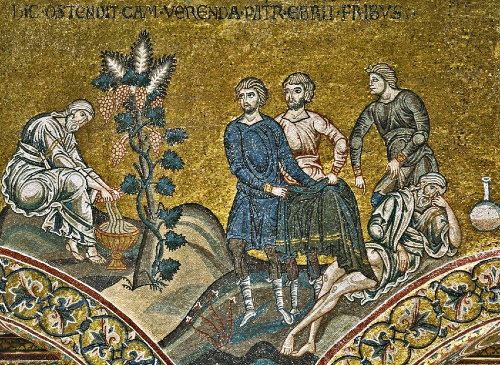This is the first in a series of articles, each one including a different principle, or tip, for how to view the Scriptures typologically. Because many Christians are somewhat aware that, in some vague sense, even the Old Testament is about Jesus (see Luke 24:27), there is little reluctance at least to the idea of seeing connections to Jesus’ person and work in the Old Testament. However, actually making those connections for oneself is quite a different story for most Bible students. Hopefully, this series will offer some very practical guides to help the enthusiastic Bible student in this pursuit.
The first and foremost principle in this line of study seems simple enough on the surface, and it is just this:
Know the Jesus story, inside and out.
That means to spend time in the gospels—Matthew, Mark, Luke, and John. Know the words and the phrases that are used and know them well. Read the gospels enough so that stories are truly stuck in your mind, so that they come up at any idle moment or often when you are simply involved in what might seem to be even the mundane daily tasks of life.
When you know the story and words of Jesus to a great degree, you will be amazed at the connections that become apparent as you read the Old Testament.
For instance, it is only Matthew who puts forth that many babies and toddlers were slaughtered by command of King Herod not long after Jesus’ birth (Matthew 2:16). Even though Matthew then quotes Jeremiah 31:15, this is not the quote from the Old Testament that has to do with the slaughter of Isrealite male babies by the decree of an evil ruler. Those particular quotes would be found in Exodus 1:16 1:22. Matthew does not draw attention to this, presumably because everyone should be familiar enough with the Moses story to hear the link between the great Israelite savior of the past and now the new work God is doing through a Savior whose life starts in a very similar manner.
Another detail that might go unnoticed is something like the tearing of the high priest’s robe in Mark 14:63. Unless one had this sitting in the back of one’s mind—embedded there—it would be very easy to miss a connection with Leviticus 21:10, which clearly states that a sitting high priest is never allowed to tear his clothing—something Jews were known for doing at times of great personal distress. In this act, the high priest of Jesus’s day has effectively given up his position, leaving the seat vacant. Yet there is a great High Priest standing in front of him, ready to assume all the responsibilities of this highest office, and His clothing is, most notably, woven in one piece, seamless (Exodus 28:8; John 19:23), and was never torn (John 19:24).
These two examples sit among virtually countless others. Your mining in the Old Testament will be immeasurably enhanced to the degree that you spend a great deal of time reading over and over through the gospels. Of course, it is not primarily your study that will be rewarded by this time spent on Jesus life and teachings, but your very walk together intimately with Him that will reap incalculable dividends.





